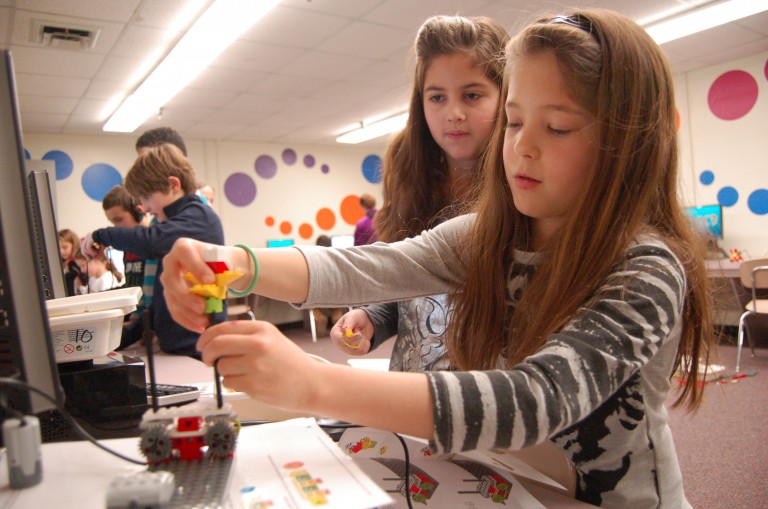The lab is full of robots. Over in the corner, a robot monkey is drumming slowly. Across the room, a robot alligator chomps its jaws whenever a hand gets too close. If this was a science fiction movie, things would inevitably go wrong. Thankfully, these robots are firmly under the control of their creators; it just so happens that these creators are a group of fourth graders.
These fourth graders are just starting out in KCD’s robotics curriculum, although students begin learning coding skills as early as junior kindergarten. They’re using Lego WeDo robots and a curriculum that teaches them to build simple robots and modify their actions. Students program their creations using a graphical, drag-and-drop software interface that makes it easy for them to control what their robot does. As their skills progress, students learn to use timers, gears, and motion and tilt sensors to create more sophisticated behaviors.
Sixth graders take it a step further in the Programming and Robotics class, which uses Lego Mindstorm NXT robots and a curriculum developed by Carnegie Mellon University. In this course, students learn to experiment with both the design of the robot and its programming in order to complete a series of increasingly difficult challenges.
By the time they reach seventh grade and the Advanced Programming and Robotics course, students are soldering their own circuit boards and using the 3D printer and laser cutter in the KCD Fab Lab to build their own robots.
The robotics curriculum—and its home, the Fab Lab—is inspired by maker culture, which values hands-on learning and the creative use of technology. (Brian Wagner and Mark Endicott, two early advocates of the KCD Fab Lab, are cofounders of Louisville’s LVL1 Makerspace.) Makers take an active role in investigating, creating, and transforming technology; that blend of curiosity and hands-on exploration is a great fit for KCD!
This post has been edited to reflect the fact that KCD’s programming curriculum now begins in junior kindergarten.

